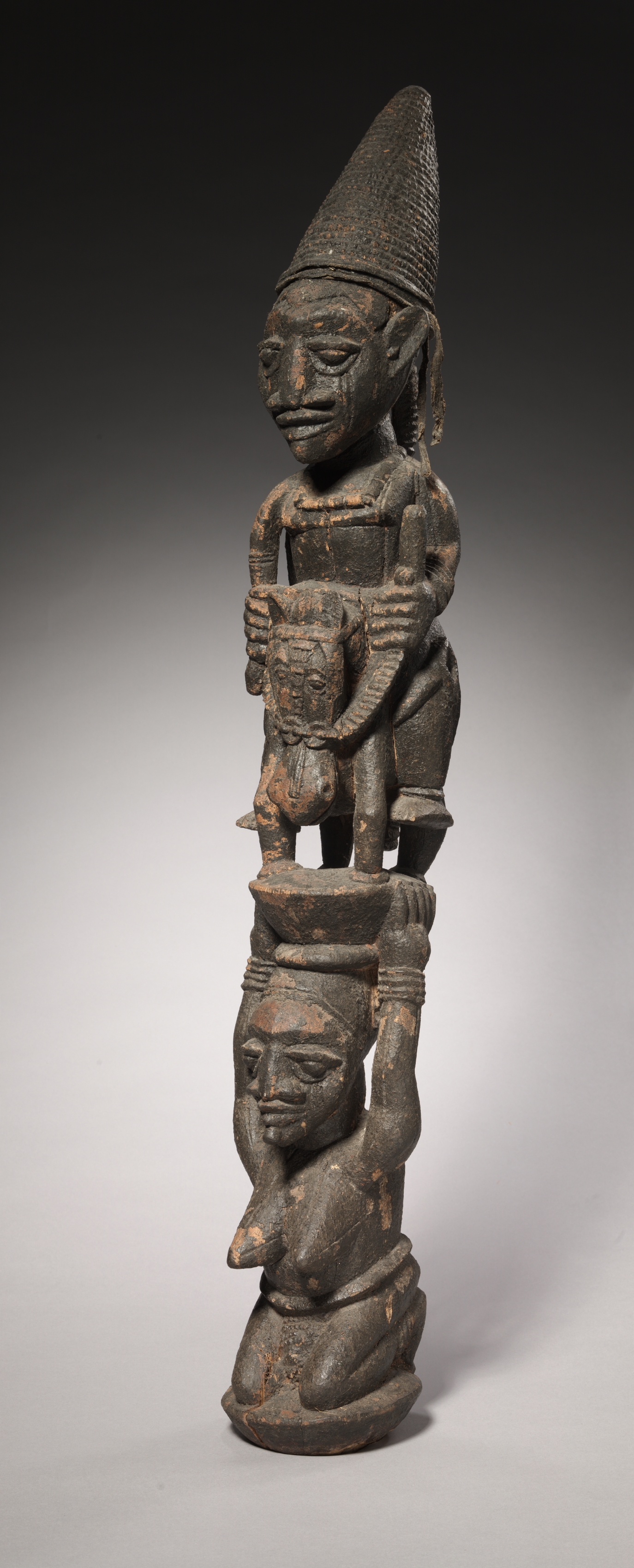The Cleveland Museum of Art
Collection Online as of April 25, 2024

Veranda Post (Òpó)
early to mid-1900s
probably by Agbonbiofe Adeshina
(Yorùbá, c. 1880–1945)
Overall: 106.6 cm (41 15/16 in.)
Location: 108A Sub-Saharan
Did You Know?
The Adeshina family were well-known carvers in the town of Ẹfọ̀n-Alààyè who passed their skills down through the generations.Description
Yorùbá palaces comprise several courtyards surrounded by carved figurative veranda posts. This post was probably used on one of the smaller verandas containing a palace shrine. The mounted warrior and kneeling woman, two common themes in the Ekiti region, signify the distribution of power in Yorùbá society. The warrior represents military skill, intellectual strength, and physical power.- by 1969Saja Tunkara1969–The Cleveland Museum of Art by purchase
- The Cleveland Museum of Art. Handbook of the Cleveland Museum of Art/1978. Cleveland, OH: The Cleveland Museum of Art, 1978. Reproduced: p. 411 archive.org
- Year in Review: 1969. The Cleveland Museum of Art, Cleveland, OH (organizer) (January 27-February 22, 1970).
- {{cite web|title=Veranda Post (Òpó)|url=false|author=Agbonbiofe Adeshina|year=early to mid-1900s|access-date=25 April 2024|publisher=Cleveland Museum of Art}}
Source URL:
https://www.clevelandart.org/art/1969.55